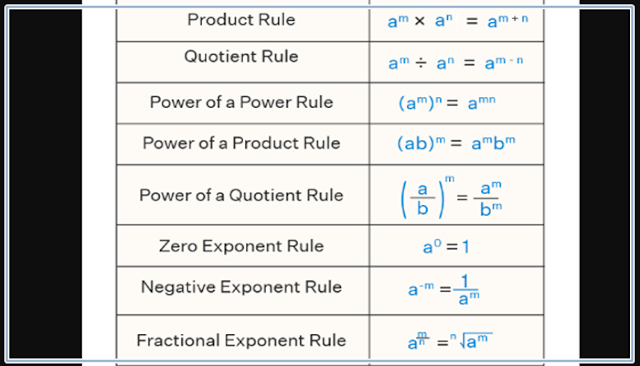Exponents are an easy but important concept in math. Understanding exponents help you learn further advanced concepts with ease. The concept of exponents has many real-world applications too. So without wasting time, continue reading below.
Exponent rules are laws in math that are used on exponent-based expressions to make them simpler. The use of exponent rules make it less complex and easy to do numerous arithmetic operations like addition, subtraction, multiplication, and division and saves time. These rules are also useful for reducing the difficulty of numbers that have complex powers involving roots, fractions, and decimals.
Learn more about the many exponent rules, which use a variety of base and exponent numbers.
Introduction to exponent rules
Exponent rules are useful for simplifying formulas with exponents that are decimals, fractions, irrational numbers, or negative integers.
One of the exponent rules, which states that am a = am + n, can be used to solve problems like 34 × 32 with ease. The exponent rules can also be used to solve expressions with greater exponent values quickly and easily.
Here are the exponent laws:
Product law of exponents
Expressions with the same bases are multiplied using the exponent product rule. According to this rule, exponents should be added while keeping the base constant in order to multiply two equations with the same base. Exponents that have the same base should surely be added when using this rule. The rule can be applied in this situation to combine two expressions into one.
Quotient law of exponents
To divide expressions with the same bases, you can use the quotient law of exponents. According to this rule, to divide two expressions with the same base, take away the exponents while keeping the base. You can solve an equation by avoiding the division procedure entirely using this law. The only prerequisite is that the bases of the two expressions must match.
Zero law of exponents
When the exponent of an expression is 0, the zero law of exponents is applied. According to this law, any number raised to 0 (other than 0) equals 1. Be aware that the 00 is indefinite because it is not specified. This will clarify that a zero exponent's value is always equal to 1, regardless of the base.
Negative law of exponents
When an exponent is a negative number, you apply the negative law of exponents. You can change the negative exponent into a positive exponent using the reciprocal. The change in the sign of the exponent values moves the expression from the numerator to the denominator.
Power of exponent laws
The last on the list is the power of exponent laws. Expressions with the form (am)n are made simpler by the power of a power law of exponents. To find the answer of a product raised to an exponent, one can use the power of a product rule of exponents. The outcome of a quotient raised to an exponent can be determined using the power of a quotient rule of exponents.
Final thoughts
Learning exponent laws helps you perform complex calculations and save time, but the benefits don’t end there. It is easier to understand exponent concepts when theory and practice are combined. Start with the basics and simple examples to strengthen your understanding.

No comments:
Post a Comment